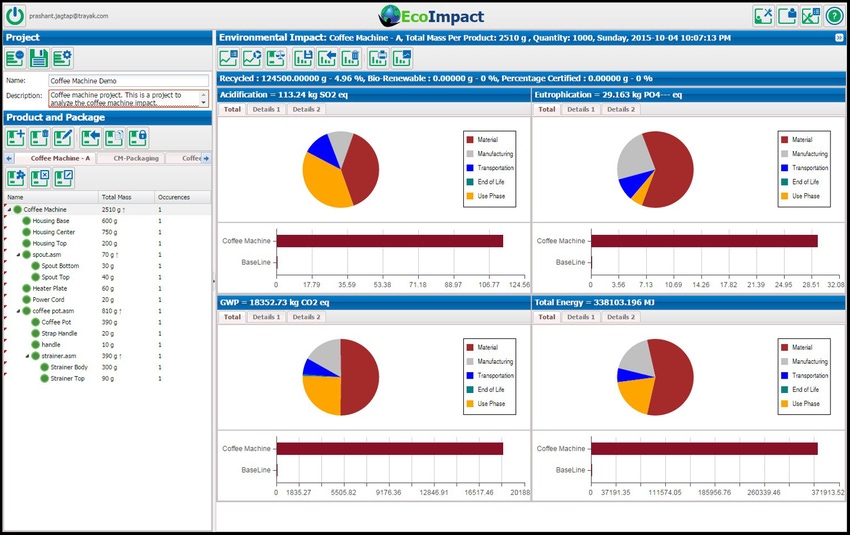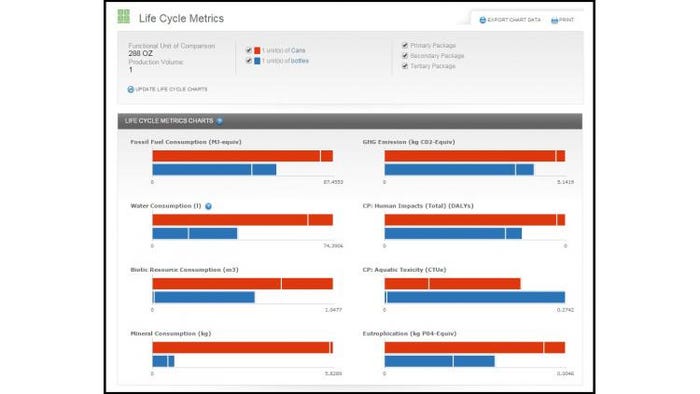For better packaging designs, take an integrated and measurable approach to sustainability
October 12, 2015

Prashant Jagtap
Today brand owners and retailers are tasked with adopting both internal and external sustainability goals. They are pressured by customers, investors and stockholders to benchmark, track and communicate progress. An integrated lifecycle approach holds the key to achieving sustainability success.
By Prashant Jagtap and Victor Bell
The key: A data-driven process
Traditionally, due to the limitations of tools, packaging design tended to follow a serial process. Results from this largely reactiveapproach were incremental, at best, when compared to that of a holistic product/packaging solution. Using tightly integrated best-in-class tools fed by lifecycle data generates results that are exponentially greater.
Today, from design and manufacturing through end-of-life recovery, sophisticated software is available to collect, analyze, report and support all facets of the product/package sustainability process. Access to complete lifecycle data not only allows companies to measure current sustainability success; but more importantly allows that data to be leveraged in creating more innovative, sustainable products and better processes.
To begin with, companies should track and report on a variety of quantifiable data including:
• Material use: The total amount and type of packaging materials put on the market.
• Product-to-Packaging Ratio: The amount of packaging used in proportion to the amount of product.
• Recycled content: Total percentage of post- and pre-consumer content used in packaging.
• Recyclability: Percentage of materials that are widely recycled, have limited recyclability access and are currently not recycled.
• Material certifications: Stock-keeping units (SKUs) with bio-based materials and/or forest certification.
• Materials of concern: The total amount of materials of concern put on the market (such as PVC), the number of SKUs containing the materials and the percentage of packaging free of them.
• Complete set of environmental indicators, such as greenhouse gas (GHG), energy use, water use and others that are relevant for your industry and business.
• Extended Producer Responsibility (EPR) fees paid in all the different jurisdictions where the company does business.
At a corporate level this information, combined with sales data, can be used to track progress over time and enable you to compare brands or divisions within a corporate structure.

What sustainability data are you tracking? What should you be tracking?
Putting data to work
Packaging should be considered from a full lifecycle perspective and sustainability processes must close the loop by leveraging the above lifecycle data to create new and innovative products and packaging. This provides some real and measurable benefits including:
• Design for products and packaging simultaneously.
• Analyze and compare multiple design iterations for greater innovation.
• Accurately measure and report against corporate sustainability initiatives/goals.
• Reduce compliance and fee costs.
With EPR fees now required in more than 50 countries around the world, using EPR fee information, for example, should enable fees to be incorporated into cost-of-goods (COG) analysis. This, in turn, allows manufacturers to set and achieve some exact cost-saving metrics.
Implementing a holistic approach requires more than the willingness to do so; it must be supported with robust and integrated tools. And, while sustainability technologies have steadily advanced in terms of features and functionality, the confluence of these tools to deliver a practical and integrated solution simply hasn’t kept pace—until now.
A new era in sustainability
Trayak and Environmental Packaging International (EPI) are collaborating to provide sustainability-driven organizations with an integrated solution that allows designers and manufacturers to simultaneously report and apply these sustainability metrics to new product packaging design. The results are new levels of sustainability, innovation, waste reduction and cost savings.
Leveraging three powerful and integrated tools, COMPASS, EcoImpact and redipoint, companies can benefit from :
• Leveraging complete lifecycle data for next-generation products and packaging.
• Measuring packaging and product iterations against real sustainability metrics.
• Understanding the impact and tradeoffs of product, packaging and EPR fee decisions.
• Aligning product/packaging with corporate sustainability goals.
Conclusion
Today manufacturers are being held accountable to ever-tightening standards. In Europe, for example, a proposal is on the table to ensure the widespread adoption of a full lifecycle approach to packaging. Some want to take things a step further and place legal restrictions on the landfilling of not just packaging materials, but on all recyclable and recoverable post-consumer waste as well.
A holistic approach, supported by integrated best-in-class software, allows environmental standards to be met while streamlining processes, reducing costs and boosting innovation. The result is a tangible, measurable and sustained impact on both the planet and bottom line.
Prashant Jagtap is president/CEO of Trayak, a consulancy and software solutions company. Trayak principals are pioneering new integrated solutions that enable companies to mainstream their product and packaging related sustainability initiatives.
Victor Bell is president of EPI, a consultancy specializing in environmental compliance, product stewardship and sustainability issues related to packaging and certain products. As more countries around the world implement Extended Producer Responsibility programs and customers demand more environmental data and sustainability attributes from brand owners, EPI offers a range of services to help clients anticipate and respond to the requirements effectively and efficiently.
You May Also Like


